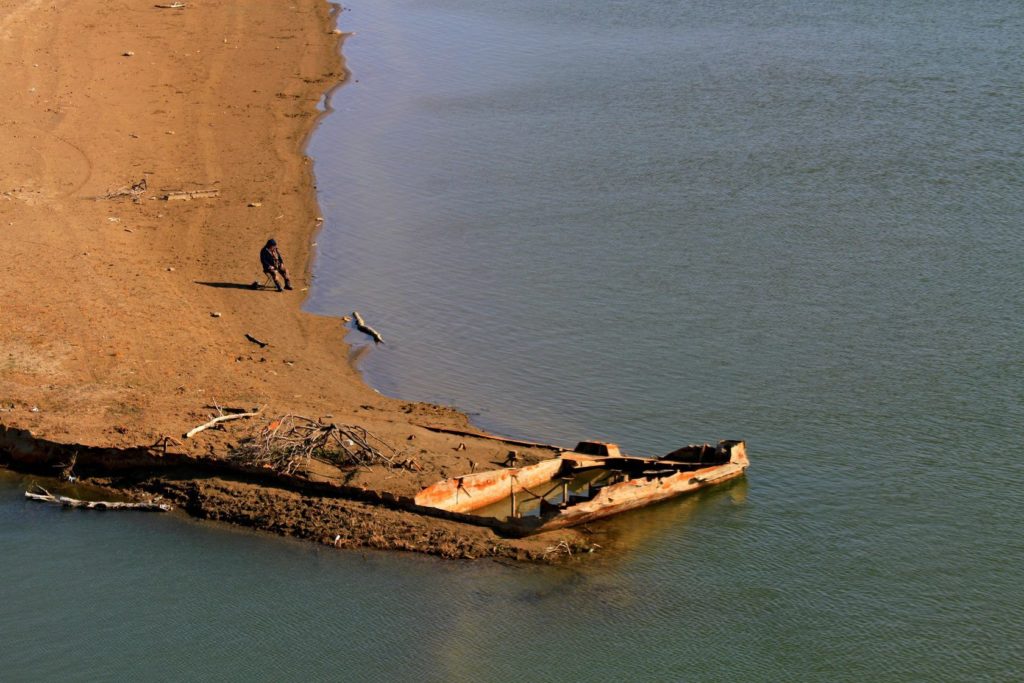LIFE BY THE RIVER. More than four million people in Kazakhstan and Russia live in the Ural river basin. They are watching the river grow shallower as time goes by. The main reason for this is human activity, scientists say. Can the Ural River’s fate be altered?
This article was originally published in Russian by the Kazakh media Vlast.kz as part of the “Developing Journalism: Exposing Climate Change” project.
Alexander Chibilev who lives in Orenburg in Russia, is one of the world’s foremost experts on the ecology of the Ural River, which flows from the Ural Mountains in Russia to the Caspian Sea in Kazakhstan. He knows everything about it, or nearly everything. He started studying the river in the 1980s and has written many scientific publications on the subject. But when given such compliments, Chibilev says: “When people ask me what to do, I know more about what not to do, since I can analyse the mistakes of the past.”
And, according to him, there were many mistakes. There’s the development of unproductive, low-yielding land, now damaging the entire river basin. The Iriklinsky Reservoir, approximately 100km north of the Russian-Kazakh border, built for a power plant. The factories that continue to poison the water even now that they have closed.
Want more Central Asia in your inbox? Subscribe to our newsletter here.
“No one has calculated the cost of these actions. Pollutants have accumulated in the bottom sediments and we do not know how much there are. We have inherited a ticking time bomb. We are now reaping what the twentieth century has sowed. And the additional environmental damage every year only aggravates the situation,” Chibilev says.

There are only preliminary, very inaccurate, estimates of the volume of industrial pollution, published in 2017 in a special report of the preliminary results of research on the Ural River. The report is based on material by scientists from Kazakhstan (A. K. Kenshimov, M. Shortanbaev) and the Russian Federation (Yu. M. Nesterenko, S. V. Levykin), edited by S. K. Akhmetov.
The report states: “20 billion tons of industrial waste have accumulated in the Ural basin. It includes waste from processing plants, overburden, and surrounding rocks. Thousands of hectares of land were reserved for landfill and industrial waste sites.”
The Ural river basin is the area of land where other rivers, known as tributaries or affluents, flow and drain into the Ural, supplying its water. In total, the Ural has 58 tributaries, the largest being the Sakmara, the Elek (or Ilek) and the Shaǵan (or Chagan). Since the construction of the Iriklinsky reservoir in the upper Ural, 80% of the river’s water comes from the Sakmara.
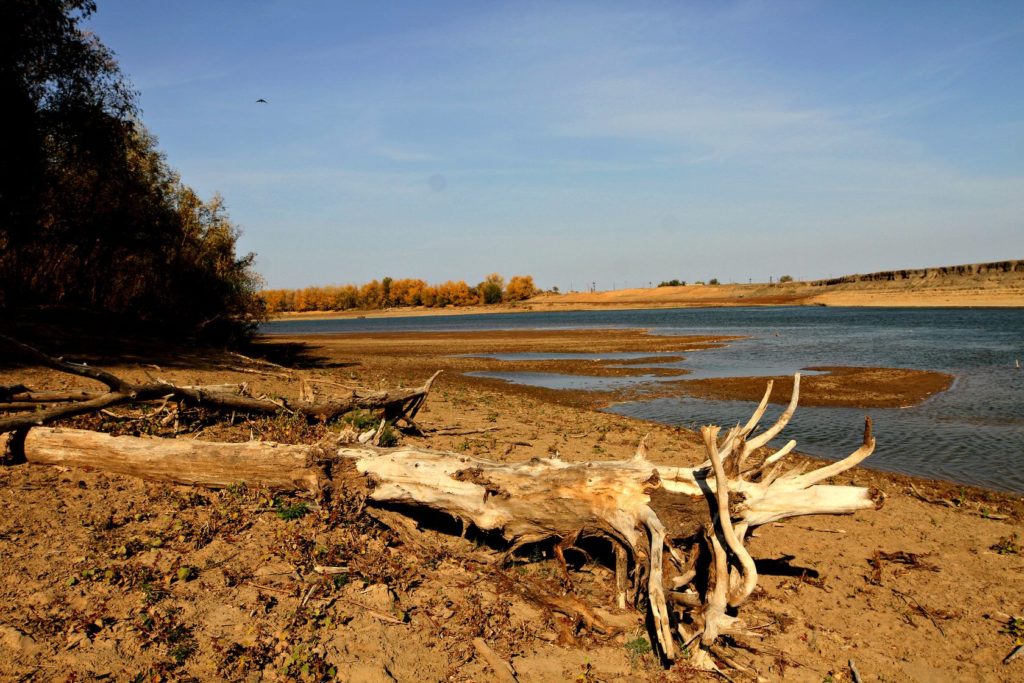
Dams are not the only problem
“Generally, reservoirs do not help preserve a river’s ecosystem. Many reservoirs built in a basin’s upper and middle parts are used inefficiently. Their use should be reviewed,” Alexander Chibilev says.
Do dams and reservoirs really affect the river’s water levels? According to Chibilev, the shallowing of the Ural was first observed in the 1970s. This is when construction of hydroelectric power stations, and therefore of large reservoirs upstream, began. Today, there are 12 large reservoirs in the Ural basin in addition to the Iriklinsky, each of which has a volume of at least 10 million cubic metres.
“There’s a joint commission on transboundary rivers aiming to preserve the river, but how can we preserve it if we build reservoirs in [the Russian republic of] Bashkiria, the very place where the runoff forms?,” Chibilev says. “The Volga barely exists anymore, instead there’s a cascade of reservoirs. A third of the water in the upper Ural basin is now regulated by dams and reservoirs. For many years, the main advantage of the Ural over the rivers of the south of the European Plain (Don, Dnepr, Dniester, Volga) was the low number of water reservoirs and dams in the lower and middle reaches.”

Deepening the riverbed is one of the most often suggested projects to save the Ural. But scientists disagree with this idea and view it as a risky venture.
Serik Hairov, head of a scientific and technical laboratory studying water resources in the Ural-Caspian Basin, says: “The amount of water will not change no matter how deep we make the riverbed. At the same time, there is the problem of pollution– tree trunks creating congestion, algae and mud. In nature, in a natural environment, various processes are at work. For example, a natural spring flood would wash away fallen trees and erode sand islands and shallows. Having a large number of blue-green algae, which we, people, dislike seeing in our rivers, is actually a good way to purify water from industrial pollution.”
Think globally, act locally
Galidolla Azidullin, head of the Ural-Caspian Water Inspection, is also sceptical about artificially clearing the riverbed. In his opinion, it is unthinkably expensive and meaningless.
“In fact, it is the canals and tributaries that flow into the Ural River that need to be cleared,” Azidullin says. “We have inspected the Ural-Kushum Canal and what we have seen is very depressing because dams and reservoirs have virtually stopped the flow of water. As a result, the canal is overgrown with reeds and algae. The water doesn’t flow.“
“The same is happening to small rivers in the Ural Basin – the Barbastau, the Derkul, the Big Uzen and the Little Uzen. So half of these small rivers no longer bring water to the Ural. It’s no surprise that the Ural’s water level is going down,” he adds.
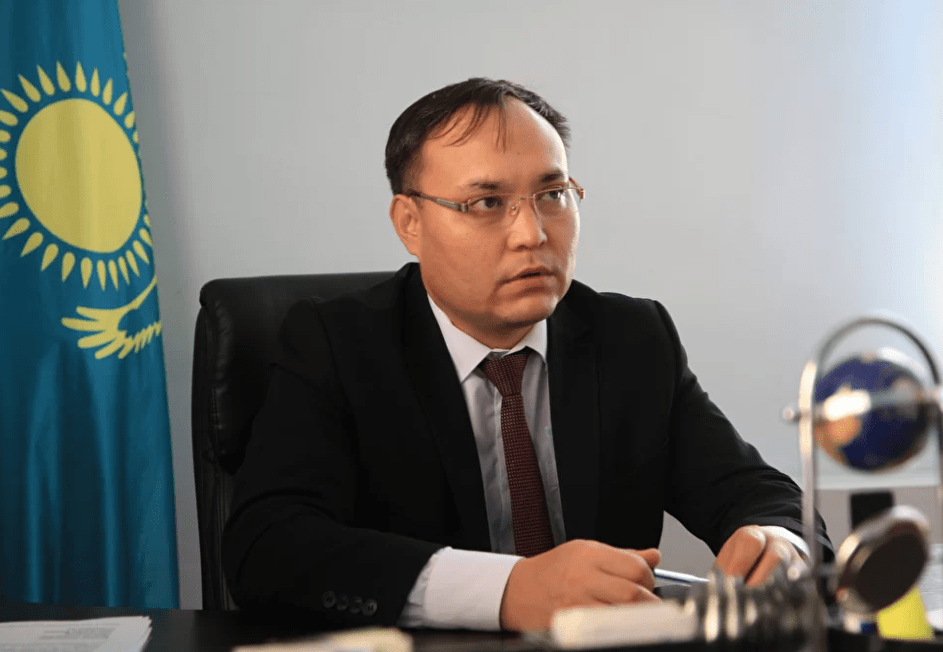
Alexander Chibilev thinks it wrong to attribute the shallowing of the Ural solely to the presence of water reservoirs. Data from many years of observation show that even before the construction of the reservoirs the river had high-water and low-water years. These periods are cyclical and closely related to climate change.
Another climate issue also affects the Ural River: the melting of the ice caps. According to several scientists, icebergs breaking off from polar glaciers can cool the warm ocean currents of the Atlantic Ocean, impacting the weather in Eurasia. Chibilev also draws attention to the fact that global climate change affects every river in central Eurasia.
Read more: Talas and its people: life by a Central Asian river affected by climate change
“It is necessary to recognise that the true causes and extent of climate change, despite a large amount of data and predictions, are poorly understood. One thing is for sure: these changes are particularly sensitive in the central regions of Eurasia, where the Ural River basin is located,” he says. “The Don, Kuban, Terek, Volga, and Ural suffer from low water. And in the Altai and farther east, including the Amur river basin, there are catastrophic floods. Climate change is not sufficiently studied, partly because most of the surface of our planet is occupied by the ocean, which isn’t studied as much as inhabited land”
The human factor
The changes happening to the Ural have attracted the attention of the public because they are visible to the naked eye. More than four million people live on the banks of the river, anywhere along its course from the spurs of the Ural Mountains in Bashkiria, to its mouth in a tree-like delta in the Caspian Sea in Kazakhstan. They not only see what is happening to the river but are themselves the main cause of these changes. They use the river and consume its water. In official documents the influence of people on the Ural is denoted by the words “water use” and “water consumption”.
There’s also industrial water use. Factories take water from the Ural and discharge polluted water back into it.
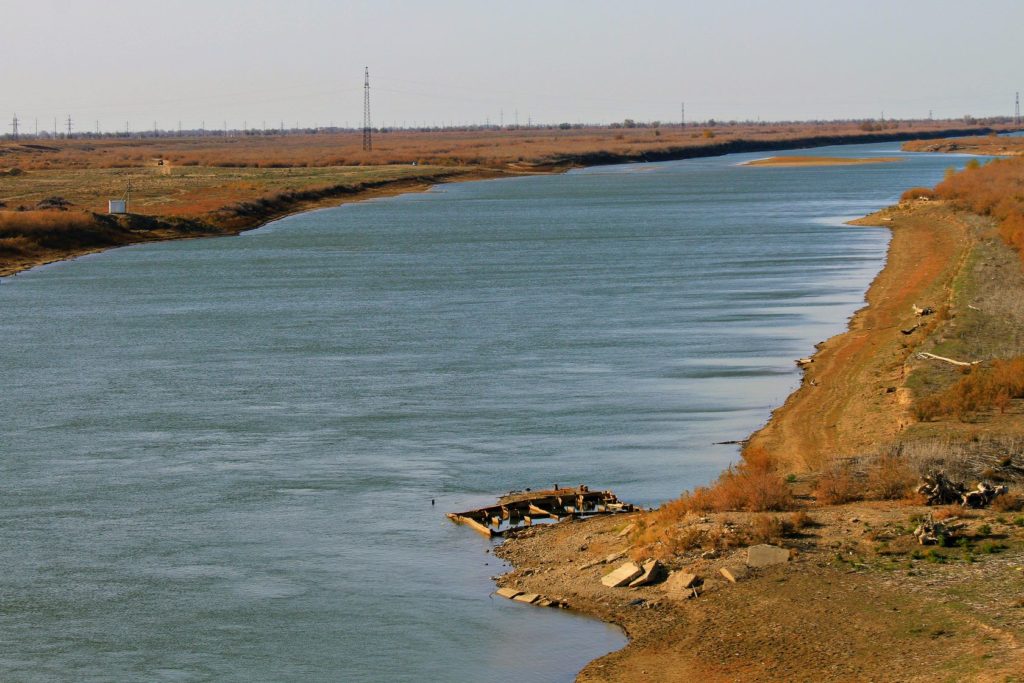
“Because of this, we must take into account low water availability in our management of natural resources, give up high water consumption and be prepared for critically low water periods in the future,” Alexander Chibilev says.
He notes that there were extremely low water periods in the 1920s and in 1954-1955. And that, in contrast, in 1942 and in 1957, the Ural River overflowed and its violent currents even tore down railway bridges.
Sturgeons
Until recently, the Ural River was considered the world’s main supplier of caviar and sturgeon. In the 1970s, caviar from the Ural accounted for 40% of all black (sturgeon) caviar on the market. But in the 1990s, scientists warned that the sturgeon population was 40 times lower than twenty years previously. Nowadays there are generally no sturgeons upstream of Atyrau, a city by the Caspian Sea in Kazakhstan.
In the 70s, Chibilev compiled an atlas of sturgeon spawning habitats in the Ural River. He admits it is now hopelessly outdated but suggests the return of sturgeon could become a measure of the river’s rehabilitation.
He explains: “The replenishing of the sturgeon stock is something like a milestone, perhaps a utopian goal. And the presence of sturgeon in the river is an indicator of its ecological state. If sturgeon appear in significant numbers in the river, it means that the river is ‘recovering’. Like, for example, in the Rhine, Europe’s most polluted river in the 1960s. The “Salmon 2000″ programme was launched and salmon reappeared, though numbers are not at all on a commercial scale yet.”
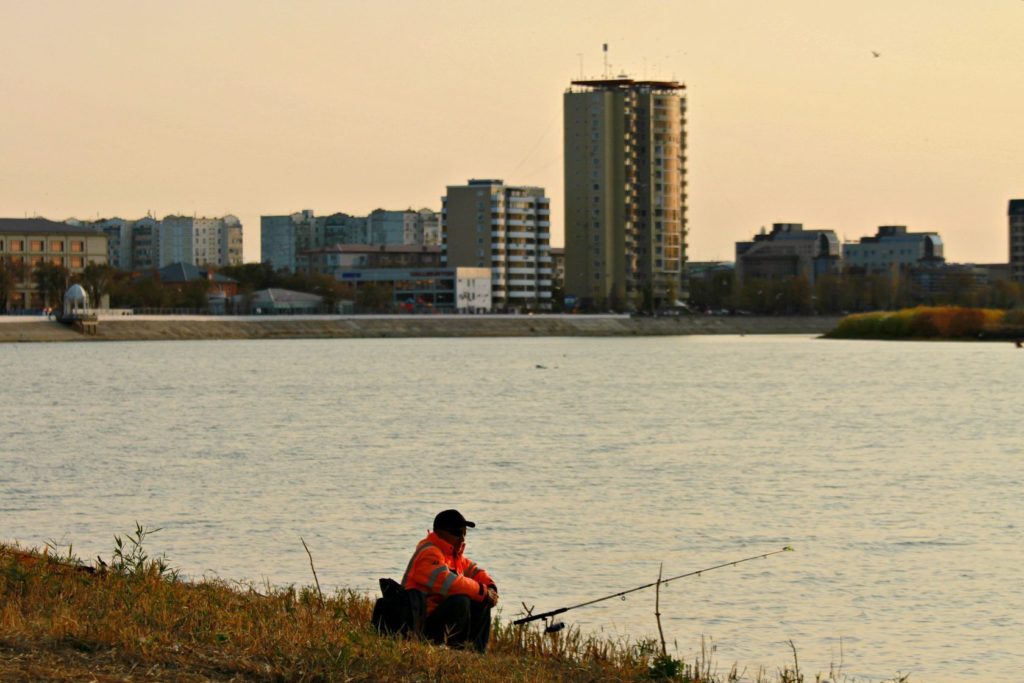
The academic suggests Russia and Kazakhstan take concrete steps to restore the Ural River now. “Both states spend huge amounts of money on the restoration of the Ural,” he says. “But a cursory review of what it is being spent on is enough to understand that this money won’t have an effect. We spend a lot on conferences, round tables, and forums, and very little on concrete action. In my opinion, state bodies should direct their efforts towards giving the Ural a special status.“
“The Ural River and its tributaries, which have unique fauna and flora, supply water, possess valuable recreational resources, and in the area from Uralsk to the Caspian Sea, in general, are almost the only source of life, need a special status of protected natural territory,” he adds. “At least some parts of the rivers: the upper reaches and their springs, gorges on mountain rivers and valley areas with abundant floodplain forests and lakes, places rare species live in or migrate to, where valuable fish species spawn, etc.“
Read more: Troubled waters: Turkmenistan’s environmental policy
“Some countries have enshrined the status of “protected river” into law, for example. In Soviet times, a section of the Ural going from the mouth of the Barbastau to the North Caspian Sea, was a “protected area”. In the 1980s, we planned for the extension of this status to the mouth of the Ilek River. The joint Russian-Kazakh commission should work on the special status of our river, otherwise what was it created for?,” he concludes.
Тhe project “Developing Journalism: Exposing Climate Change” aims to identify the challenges of progressive climate change through the development and strengthening of independent media in Central Asia under the mentorship of experts from Media Development Center in Kyrgyzstan, Anhor.uz in Uzbekistan, Asia Plus in Tajikistan and Vlast.kz in Kazakhstan. The project is implemented by n-ost (Germany) and MediaNet International Centre for Journalism (Kazakhstan) with the support of the German Federal Ministry of Economic Cooperation and Development (BMZ).
Lukpan Akhmedyarov and Raul Uporov
Translated from Russian by Valentine Baldassari
 A disappearing river: the fate of the Ural
A disappearing river: the fate of the Ural 
